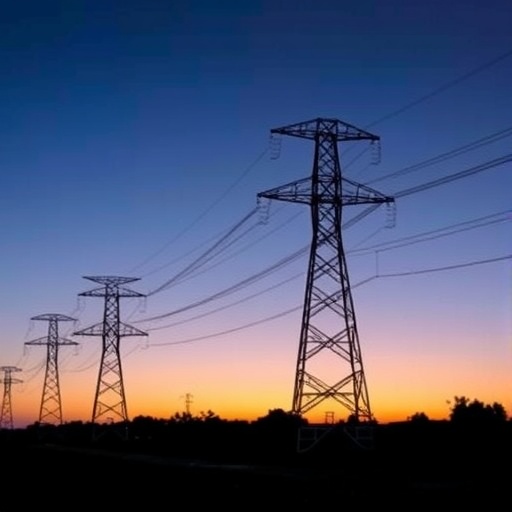Surge arresters are critical components in electrical power systems, designed to protect equipment from voltage spikes that occur due to lightning strikes or switching events. The efficiency of these devices can be significantly impacted by pollution and environmental conditions, which in turn influence their electrical conductivity. Recent research conducted by Hoseini Nejadiyan Kooshki and Seyyedbarzegar delves deep into the modeling of leakage currents through surge arresters, providing a framework to estimate the electrical conductivity of pollution layers that accumulate on these devices. This innovative approach not only enhances our understanding of surge arrester functionality but also paves the way for improved design and maintenance strategies in electrical systems.
In the pursuit of accurate modeling, the researchers begin by examining the ways in which environmental pollutants contribute to the degradation of surge arresters. Accumulated contaminants such as dust, salt, and industrial residues can form a conductive layer on the surface of the arresters, thereby affecting their performance. The study highlights the correlation between pollution levels and the increase in leakage currents, which can lead to premature failure of surge protection devices and compromise the integrity of the entire electrical network.
Understanding the implications of pollution on surge arresters requires a detailed analysis of the conductivity of the pollution layer itself. By employing sophisticated modeling techniques, the researchers estimated how variations in environmental factors—such as humidity, temperature, and the nature of pollutants—affect the electrical characteristics of these layers. The findings suggest that localized conditions can drastically change the performance metrics of surge arresters, reinforcing the need for context-sensitive maintenance strategies.
Additionally, the authors explore the physical and chemical dynamics that contribute to conductivity in pollution layers. They conducted a series of experiments that mimic real-world conditions, enabling them to gather empirical data that supports their theoretical models. The results unequivocally indicate that the type of pollution—ranging from organic materials to inorganic salts—plays a pivotal role in determining the level of electrical conductivity, and consequently, the leakage current through the surge arresters.
The implications of this research extend beyond surge arresters themselves. By establishing a clearer understanding of how pollution influences electrical components, the study contributes to a broader conversation about the resilience of electrical systems in the face of environmental challenges. In designing smarter, more adaptable infrastructure, engineers can integrate the findings of this research to minimize risks associated with pollution-induced electrical failures.
Moreover, the researchers’ innovative modeling techniques hold promise for future applications. As smart grid technologies evolve, real-time monitoring of environmental conditions combined with predictive modeling could allow for proactive maintenance of electrical systems. By anticipating potential issues such as increased leakage currents due to pollution, utility operators can take corrective measures before failures occur, effectively enhancing system reliability.
Through their findings, Kooshki and Seyyedbarzegar also emphasize the importance of standardized testing protocols for surge arresters. They argue that existing standards may not fully accommodate the variations introduced by pollution, suggesting that industry guidelines may need to be updated to ensure comprehensive performance assessments. This insight is particularly vital for engineers and manufacturers aiming to enhance surge arrester designs for diverse operational environments.
Another significant aspect of the research is its applicability in developing regions, where pollution levels may vary dramatically. Surge arresters installed in urban areas often face different challenges compared to those in rural settings. This study offers tools for tailoring solutions to specific contexts, ensuring that surge protection remains effective regardless of geographic location.
As the electrical engineering community grapples with the challenges posed by increasingly polluted environments, Kooshki and Seyyedbarzegar’s research stands as a beacon of progress. Their work not only sheds light on the intricate relationship between pollution and electrical engineering but also sets a precedent for future studies aimed at enhancing equipment resilience against environmental factors. The emphasis on empirical data and innovative modeling opens up new avenues for research, solidifying the importance of cross-disciplinary approaches in tackling complex engineering challenges.
Moving forward, the researchers advocate for further investigation into advanced materials that could be employed in surge arrester design to mitigate the effects of pollution. By exploring coatings or barrier technologies that resist pollutant accumulation, engineers can create surge arresters with extended lifespans and consistent performance. This approach not only ensures the reliability of electrical systems but also contributes to sustainable engineering practices.
In conclusion, the groundbreaking work of Hoseini Nejadiyan Kooshki and Seyyedbarzegar presents a comprehensive view of how pollution affects surge arresters, offering critical insights for future developments in electrical engineering. By bridging the gap between environmental science and engineering practices, their research underscores the importance of continual innovation in safeguarding electrical infrastructure against the pervasive effects of environmental contaminants. Enhanced understanding in this area fosters the development of more resilient electrical systems, ultimately contributing to a more reliable and sustainable energy future.
Subject of Research: Surge arrester leakage current modeling based on pollution layer electrical conductivity estimation.
Article Title: Surge arrester leakage current modeling based on pollution layer electrical conductivity estimation.
Article References:
Hoseini Nejadiyan Kooshki, A., Seyyedbarzegar, S. Surge arrester leakage current modeling based on pollution layer electrical conductivity estimation. Sci Rep (2025). https://doi.org/10.1038/s41598-025-29594-y
Image Credits: AI Generated
DOI:
Keywords: Leakage current, surge arrester, electrical conductivity, pollution layer, electrical engineering




